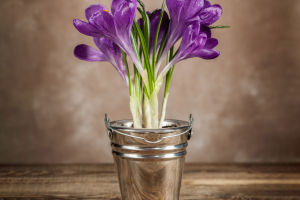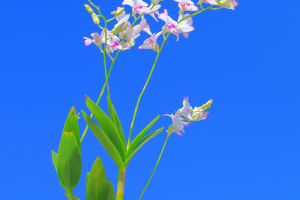In the vast world of flowers, few possess the delicate charm and timeless appeal of Gypsophila, commonly known as baby's breath.
Originating from the steppes of Eastern Europe and Asia, this unassuming flower has quietly captured the hearts of many with its ethereal beauty and understated elegance. Let's delve deeper into the fascinating world of baby's breath.
Origins and Evolution
Baby's breath's journey begins in the sun-drenched plains and rocky landscapes of its native habitat. Thriving in arid conditions and alkaline soils, it has evolved into a resilient and adaptable plant. Belonging to the Caryophyllaceae family, baby's breath encompasses around 150 species of herbaceous perennials and annuals. Over millennia, it has undergone natural selection, developing unique characteristics and adaptations that allow it to survive and thrive in diverse environments.
Botanical Characteristics
At first glance, baby's breath may appear delicate, but a closer inspection reveals its remarkable resilience and beauty. The plant is characterized by its slender stems, which are adorned with clusters of tiny, star-shaped flowers. These delicate blooms come in various shades of white, pink, and lavender, adding a soft and romantic touch to any floral arrangement. Despite its fragile appearance, baby's breath is surprisingly robust, capable of withstanding harsh weather conditions and poor soil quality.
Cultural Significance
Throughout history, baby's breath has held a special place in various cultures and traditions. In Victorian England, it symbolized purity and innocence, making it a popular choice for bridal bouquets and floral wreaths. Similarly, in Eastern cultures, it was revered for its association with spirituality and renewal, adorning ceremonial garlands and offerings. Today, it continues to be cherished for its timeless elegance and universal appeal, serving as a symbol of love, purity, and hope.
Versatility in Floral Design
One of the most striking qualities of baby's breath is its versatility in floral design. While often used as a filler in bouquets and arrangements, it has also gained popularity as a standalone element in minimalist designs. Whether cascading from a bridal bouquet, adorning a flower crown, or suspended in delicate floral installations, baby's breath adds an ethereal charm to any setting. Its airy blooms create a sense of movement and lightness, enhancing the overall aesthetic of any floral composition.
Cultivation and Care
Baby's breath's appeal extends beyond its aesthetic qualities to its ease of cultivation and care. As a hardy and drought-tolerant plant, it thrives in well-drained soil and full sunlight. With minimal maintenance, it can flourish in garden borders, containers, and even rocky landscapes, providing a constant source of beauty and inspiration throughout the growing season. Regular watering and occasional fertilization will ensure healthy growth and abundant blooms, making it a favorite among both novice and experienced gardeners.
Ecological Importance
In addition to its ornamental value, baby's breath plays a crucial role in supporting biodiversity and ecosystem health. As a nectar source for pollinators such as bees, butterflies, and moths, it contributes to the intricate web of interactions that sustain ecosystems worldwide. Furthermore, its ability to thrive in arid conditions makes it a valuable plant for xeriscaping and habitat restoration efforts, helping to conserve water and preserve fragile ecosystems.
Cultural and Symbolic Associations
Baby's breath holds a myriad of cultural and symbolic associations, transcending geographical and temporal boundaries. In the language of flowers, it represents purity, innocence, and eternal love, making it a popular choice for weddings, anniversaries, and other celebratory occasions. Its delicate appearance and enduring charm evoke sentiments of tenderness, nostalgia, and hope, resonating with people across generations and cultures.
In the tapestry of botanical wonders, baby's breath stands out as a beacon of delicate beauty and enduring charm. From its humble origins on the sun-drenched plains to its widespread popularity in floral arrangements and cultural traditions, baby's breath continues to captivate hearts and inspire imaginations. Whether adorning bridal bouquets, gracing garden borders, or enchanting viewers with its ethereal allure, this timeless flower remains an emblem of purity, innocence, and everlasting love.


